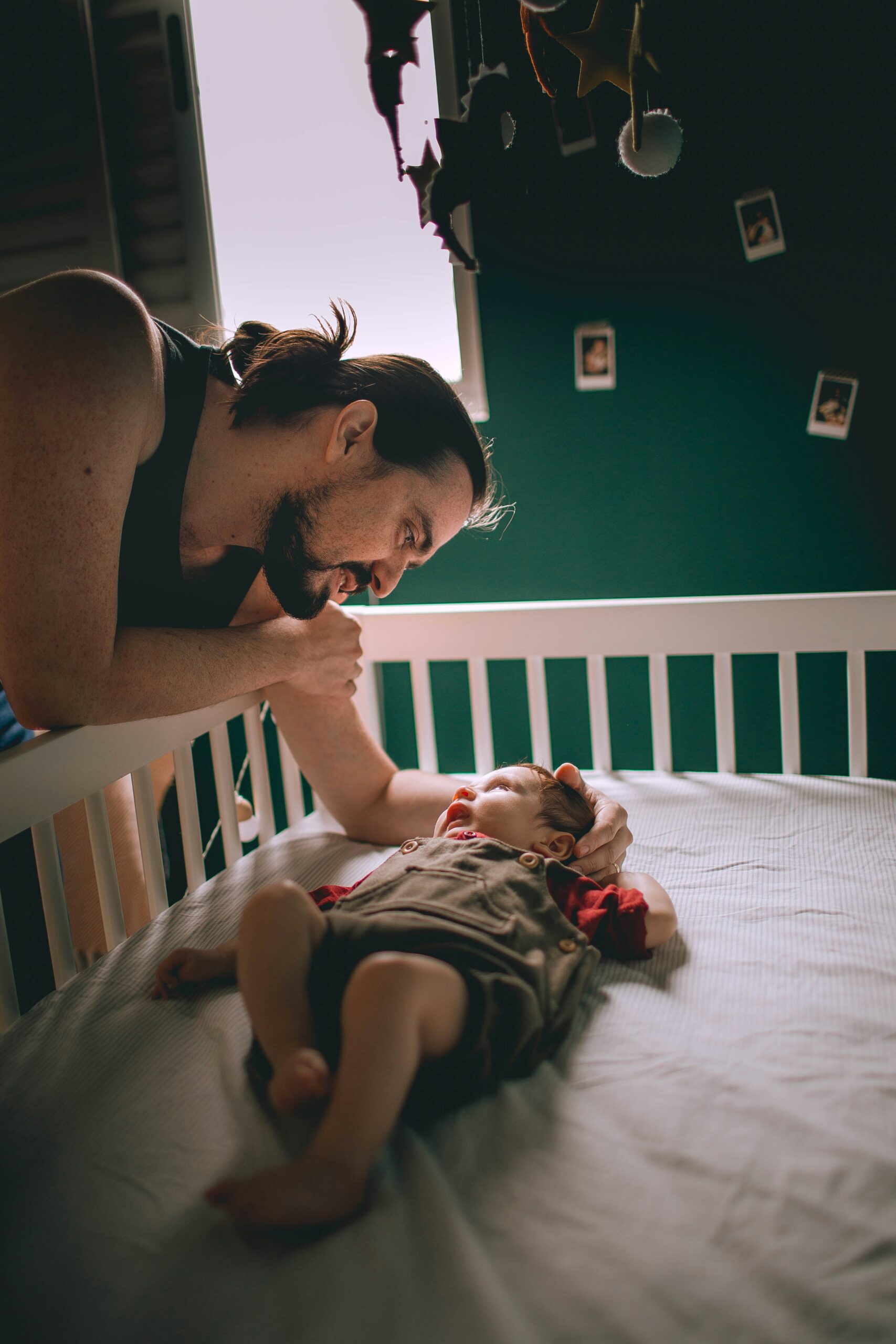Ensuring that infants and toddlers have a safe sleep environment is paramount for their well-being. Sleep safety can prevent many risks and contribute to a restful and healthy sleep for your little one. In this blog post, we’ll discuss key aspects of sleep safety and highlight common hazards to avoid.
1. Avoid Loose Bedding
Loose bedding, such as blankets, pillows, and stuffed animals, can pose a significant risk to infants and toddlers.
Why to Avoid:
- Suffocation Risk: Loose items can cover a baby’s face, leading to suffocation.
- Strangulation Hazard: Strings or ribbons on bedding can pose a strangulation risk.
Safe Alternatives:
- Swaddle Blankets: For younger babies, swaddle blankets can provide warmth and security without the risk of loose fabric.
- Sleep Sacks: Wearable blankets keep babies warm and safe without loose fabric.
2. No Bumpers in the Crib
Crib bumpers were once popular, but they are now recognized as a safety hazard.
Why to Avoid:
- Suffocation Risk: Babies can press their faces against bumpers and suffocate.
- Strangulation Hazard: Babies can become entangled in the bumper ties.
Safe Alternatives:
- Bare Crib: A firm mattress with a fitted sheet is the safest option.
- Mesh Liners: If bumpers are necessary, opt for breathable mesh liners, but ensure they are securely attached and free of loose parts.
3. Keep the Crib Empty
It can be tempting to fill a crib with toys and comfort items, but this can be dangerous.
Why to Avoid:
- SIDS Risk: Soft objects in the crib increase the risk of Sudden Infant Death Syndrome (SIDS).
- Choking Hazard: Small toys can be a choking risk.
Safe Alternatives:
- Minimalist Approach: Keep the crib free of toys, stuffed animals, and additional bedding.
- Comfort Item: If your toddler needs a comfort item, choose one that is small, flat, and safe.
4. Use a Firm Mattress
A soft mattress may seem comfortable, but it is not safe for infants.
Why to Avoid:
- Suffocation Risk: Soft surfaces can conform to a baby’s face and cause suffocation.
- Spinal Support: Firm mattresses provide better support for a developing spine.
Safe Alternatives:
- Firm Crib Mattress: Ensure the mattress is firm and fits snugly in the crib without gaps.
- Check Standards: Verify that the mattress meets current safety standards.
5. Place Baby on Their Back
The safest sleep position for infants is on their back.
Why to Avoid Other Positions:
- SIDS Risk: Sleeping on the stomach or side increases the risk of SIDS.
Safe Practice:
- Back Sleeping: Always place your baby on their back to sleep, both for naps and nighttime sleep.
- Tummy Time: Supervised tummy time during waking hours helps develop muscles without the risks associated with stomach sleeping.
6. Avoid Overheating
Overheating can be dangerous for babies, contributing to SIDS.
Why to Avoid:
- SIDS Risk: Overheating has been linked to an increased risk of SIDS.
Safe Alternatives:
- Room Temperature: Keep the room at a comfortable temperature, typically between 68-72°F (20-22°C).
- Dress Appropriately: Dress your baby in light sleepwear and avoid heavy blankets.
7. No Smoking
Exposure to smoke is harmful to babies and can increase the risk of SIDS.
Why to Avoid:
- SIDS Risk: Both prenatal and postnatal exposure to smoke increases the risk of SIDS.
- Respiratory Issues: Smoke exposure can lead to respiratory problems.
Safe Practice:
- Smoke-Free Environment: Ensure that your baby’s sleep environment is completely smoke-free.
8. Crib Safety Standards
Ensure that your crib meets the latest safety standards.
Why to Avoid Old or Recalled Cribs:
- Safety Hazards: Older cribs or those not meeting current standards can have safety issues like wide slats, lead paint, or drop-side mechanisms.
Safe Alternatives:
- New Crib: Purchase a new crib that meets current safety standards.
- Check for Recalls: Regularly check for recalls on cribs and other sleep products.
9. Monitor the Sleep Environment
Keep an eye on your baby’s sleep environment to ensure it remains safe.
Why to Avoid Unmonitored Sleep:
- Accidents: Babies can move or situations can change quickly.
Safe Practice:
- Baby Monitors: Use baby monitors to keep an eye on your baby without disturbing their sleep.
- Regular Checks: Periodically check the sleep environment for hazards like loose screws or worn-out mattresses.
Conclusion
Creating a safe sleep environment for infants and toddlers is essential for their health and well-being. By avoiding loose bedding, crib bumpers, and soft mattresses, and by placing babies on their backs, ensuring a smoke-free environment, and monitoring the sleep area, you can significantly reduce the risks and promote better sleep quality for your little one. Prioritize these safety practices to ensure your baby sleeps soundly and safely.



